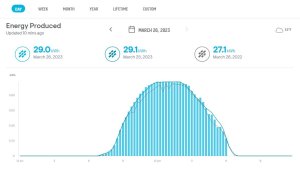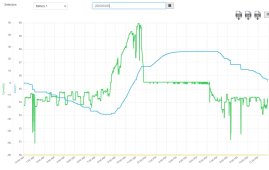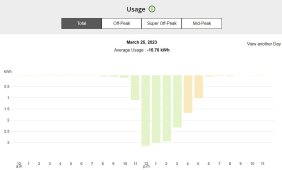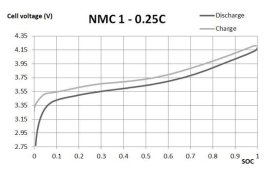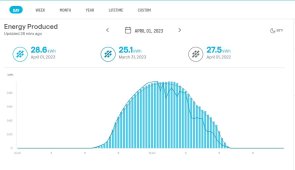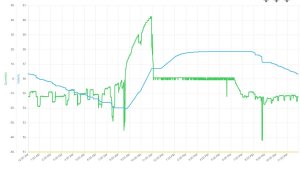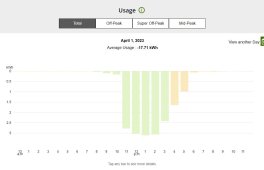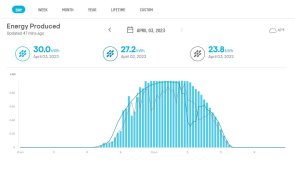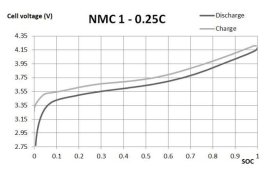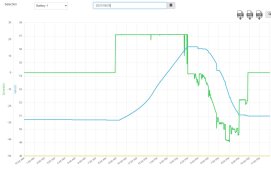GXMnow
Solar Wizard
- Joined
- Jul 17, 2020
- Messages
- 2,702
Just got my SCE Bill for Feb. to Mar.
The taxes and "Non Bypassable Charges" came up to about $10, but we also got a $71 CA Climate Credit. That makes my bill -$60.31 so I have a nice credit going into the warmer weather. For this billing period, I ended up net exporting 92 KWHs. That comes out to just over 3 KHWs per day on average. And my DC solar panels have been producing over 5 KWHs a day. Without the DC panels, I would have been a net importer for sure. On those cloudy days, it was the DC panels that put enough charge into the battery bank to make it through the peak rate time.
On the energy charges, they changed the rates yet again. So I have 6 entries for the time of use, 3 at the Feb. rates and 3 at the Mar. rates. My billing period ends on about the 16th of each month. The rate change is pretty small, but they didn't list the date on each charge, but comparing to my last bill it looks like the delivery charges went down a tiny bit on all 3 rates. On the generation charges, Mid Peak went down, Off Peak and Super Off Peak both went up. As long as I am getting net export credit, they keep adding it up and I am now at $37.61 in credit so far. But since I am on monthly billing, when the credit goes below zero, I pay it off. On this billing year, I did pay them $51.59 for energy in Nov. and Dec. at the end of last year with the really bad weather. By the end of the next billing month, I will have more than that in credits. With the additional DC panels, I have to decide if I want to go back to annual "True Up" or stick to the monthly payments. I just wish they would use my energy credit to pay off the taxes and such. But no, the money has to go in a big circle.
Can you guess what days we had rain and clouds?

The odd part is that the battery delays the energy import a day. On the day I don't get much solar, the house still runs on the battery, but then I need to use grid power the next day.
The taxes and "Non Bypassable Charges" came up to about $10, but we also got a $71 CA Climate Credit. That makes my bill -$60.31 so I have a nice credit going into the warmer weather. For this billing period, I ended up net exporting 92 KWHs. That comes out to just over 3 KHWs per day on average. And my DC solar panels have been producing over 5 KWHs a day. Without the DC panels, I would have been a net importer for sure. On those cloudy days, it was the DC panels that put enough charge into the battery bank to make it through the peak rate time.
On the energy charges, they changed the rates yet again. So I have 6 entries for the time of use, 3 at the Feb. rates and 3 at the Mar. rates. My billing period ends on about the 16th of each month. The rate change is pretty small, but they didn't list the date on each charge, but comparing to my last bill it looks like the delivery charges went down a tiny bit on all 3 rates. On the generation charges, Mid Peak went down, Off Peak and Super Off Peak both went up. As long as I am getting net export credit, they keep adding it up and I am now at $37.61 in credit so far. But since I am on monthly billing, when the credit goes below zero, I pay it off. On this billing year, I did pay them $51.59 for energy in Nov. and Dec. at the end of last year with the really bad weather. By the end of the next billing month, I will have more than that in credits. With the additional DC panels, I have to decide if I want to go back to annual "True Up" or stick to the monthly payments. I just wish they would use my energy credit to pay off the taxes and such. But no, the money has to go in a big circle.
Can you guess what days we had rain and clouds?

The odd part is that the battery delays the energy import a day. On the day I don't get much solar, the house still runs on the battery, but then I need to use grid power the next day.




